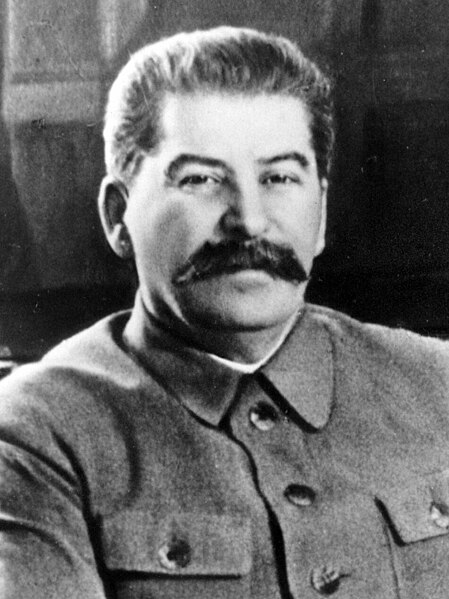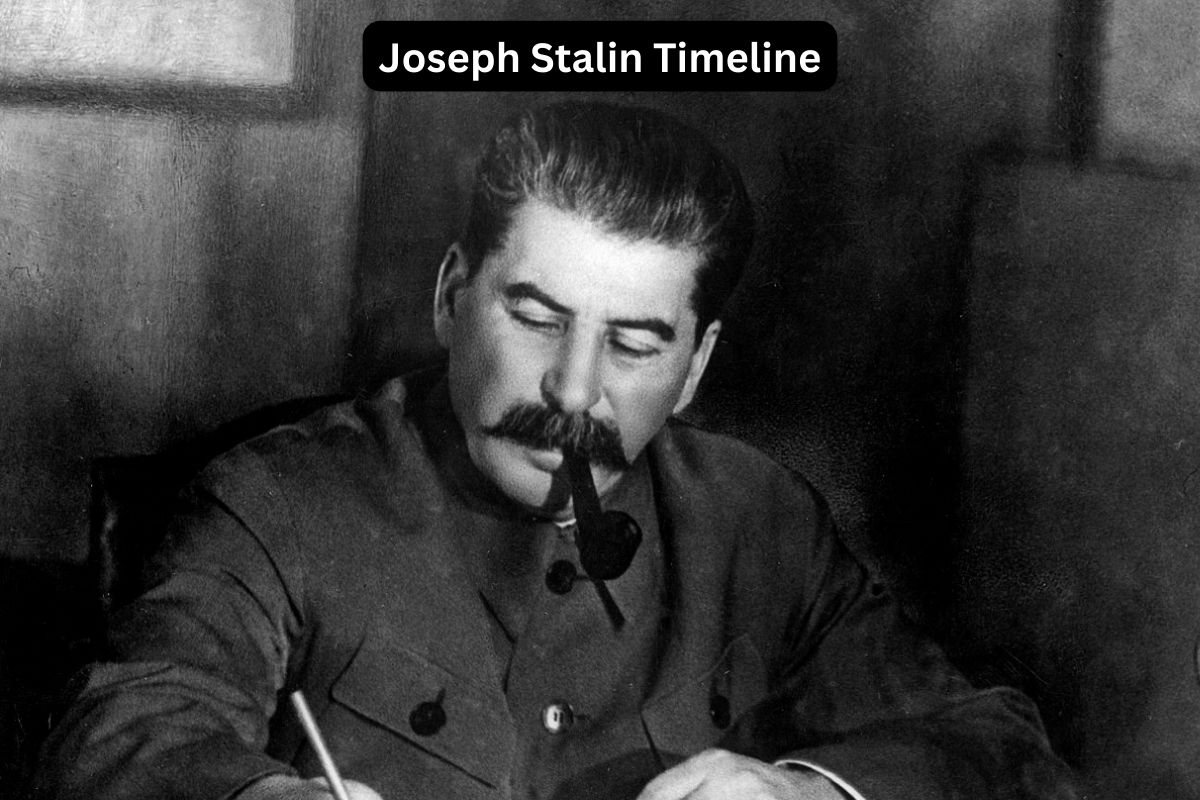In the annals of history, few figures evoke as much controversy and debate as Joseph Stalin, the leader of the Soviet Union from the mid-1920s until his death in 1953. Stalin’s rule was characterized by immense power, rapid industrialization, and brutal repression.
This article delves into the life and legacy of Stalin, exploring his rise to power, the implementation of his policies, and the lasting impact of his regime on Soviet society and the world.
From the tumultuous years of the Russian Revolution to the harrowing depths of the Great Purge, Stalin’s legacy remains a complex and often unsettling chapter in the history of the 20th century.
| Year | Event |
|---|---|
| 1878 | Joseph Stalin (born Ioseb Besarionis dze Jughashvili) is born in Gori, Georgia. |
| 1894 | Stalin enters the Tiflis Theological Seminary but is expelled in 1899 for revolutionary activities. |
| 1901 | Stalin joins the Social Democratic Labour Party (SDLP) and becomes involved in revolutionary activities. |
| 1917 | Russian Revolution takes place. Stalin plays a role in the Bolshevik seizure of power. |
| 1922 | Stalin is appointed General Secretary of the Communist Party. |
| 1924 | Stalin emerges as the leader of the Soviet Union after Lenin’s death. |
| 1928-1933 | Stalin implements the First Five-Year Plan for rapid industrialization and collectivization. |
| 1934-1939 | Great Purge targets political opponents, resulting in mass repression and executions. |
| 1939-1945 | World War II begins; the Soviet Union becomes a key player in the Allied victory. |
| 1945 | Soviet Union emerges as a superpower; Stalin participates in Yalta and Potsdam conferences. |
| 1949 | Soviet Union successfully tests its first atomic bomb. |
| 1953 | Joseph Stalin dies on March 5, 1953, from a cerebral hemorrhage. |
Timeline of Joseph Stalin
1878: Joseph Stalin is born in Gori, Georgia
Joseph Stalin (born Ioseb Besarionis dze Jughashvili) is born on December 18, 1878, in Gori, Georgia, which was then part of the Russian Empire.
He was born into a humble family, his father being a cobbler and his mother a housemaid. Stalin’s childhood was marked by poverty and hardship.

1894: Stalin enters the Tiflis Theological Seminary but is expelled in 1899 for revolutionary activities
At the age of 16, Stalin enters the Tiflis Theological Seminary with the intention of studying for the priesthood.
However, his time at the seminary is characterized by his growing involvement in revolutionary activities. He reads illicit literature, becomes influenced by Marxist ideas, and eventually becomes associated with radical political groups.
1901: Stalin joins the Social Democratic Labour Party (SDLP) and becomes involved in revolutionary activities
Stalin officially joins the Social Democratic Labour Party (SDLP), a Marxist political party that advocated for the overthrow of the Tsarist regime and the establishment of a socialist society in Russia.
Also Read: Facts About Joseph Stalin
His involvement in the party marks the beginning of his active participation in revolutionary politics. Stalin quickly rises through the ranks of the party due to his organizational skills and dedication to the cause of socialism.
1917: Russian Revolution takes place. Stalin plays a role in the Bolshevik seizure of power
The year 1917 was a pivotal moment in Russian history, marked by the Russian Revolution. Joseph Stalin played a significant role in the events leading up to the revolution and its aftermath.
Also Read: Accomplishments of Joseph Stalin
As a member of the Bolshevik faction of the Russian Social Democratic Labour Party, led by Vladimir Lenin, Stalin was involved in the planning and execution of the October Revolution, which culminated in the overthrow of the Provisional Government and the establishment of Bolshevik rule.
Stalin’s organizational skills and ruthless tactics made him a valuable asset to the Bolsheviks during this turbulent period.
1922: Stalin is appointed General Secretary of the Communist Party
Following the consolidation of Bolshevik power, Stalin’s influence within the party continued to grow. In 1922, he was appointed General Secretary of the Communist Party of the Soviet Union (CPSU).
While the position of General Secretary initially seemed relatively minor, Stalin used it to his advantage to consolidate power within the party bureaucracy. He gradually amassed control over key party appointments and administrative functions, effectively solidifying his authority within the party hierarchy.

1924: Stalin emerges as the leader of the Soviet Union after Lenin’s death
The year 1924 marked a significant turning point in Stalin’s political career. Following the death of Vladimir Lenin in January 1924, a power struggle ensued within the Communist Party over the future direction of the Soviet state.
Stalin emerged as one of the main contenders for leadership, alongside figures such as Leon Trotsky and Nikolai Bukharin. Through a combination of strategic maneuvering, alliances, and the cultivation of a cult of personality, Stalin eventually outmaneuvered his rivals and consolidated his grip on power.
By the end of 1924, Stalin had effectively become the de facto leader of the Soviet Union, setting the stage for his subsequent rise to absolute authority.
1928-1933: Stalin implements the First Five-Year Plan for rapid industrialization and collectivization
During this period, Joseph Stalin implemented the First Five-Year Plan, a series of ambitious economic policies aimed at rapidly industrializing the Soviet Union and collectivizing agriculture.
The plan emphasized the development of heavy industry, infrastructure, and the expansion of manufacturing capabilities.
However, the implementation of these policies led to widespread social upheaval, including forced collectivization of farms, mass relocation of peasants, and harsh labor conditions.
The policies also resulted in widespread famine, particularly in Ukraine, where millions of people perished in what became known as the Holodomor.
1934-1939: Great Purge targets political opponents, resulting in mass repression and executions
The Great Purge, also known as the Great Terror, was a campaign of political repression orchestrated by Stalin’s regime aimed at eliminating perceived enemies of the state and consolidating Stalin’s power.
The purge targeted not only high-ranking party officials but also intellectuals, military leaders, and ordinary citizens suspected of disloyalty or dissent. Thousands were arrested, tortured, and executed, while millions more were sent to forced labor camps (Gulags).
The Great Purge instilled a climate of fear and paranoia throughout the Soviet Union, effectively eliminating any opposition to Stalin’s rule.

1939-1945: World War II begins; the Soviet Union becomes a key player in the Allied victory
World War II began in 1939 with the invasion of Poland by Nazi Germany. The Soviet Union initially signed a non-aggression pact with Germany, known as the Molotov-Ribbentrop Pact.
However, in 1941, Germany violated the pact and launched Operation Barbarossa, invading the Soviet Union. The Soviet Union then became a key Allied power in the fight against Nazi Germany.
Under Stalin’s leadership, the Soviet Union played a crucial role in defeating the Axis powers on the Eastern Front. The war resulted in massive human and material losses for the Soviet Union, but ultimately, the Allies emerged victorious in 1945.
1945: Soviet Union emerges as a superpower; Stalin participates in Yalta and Potsdam conferences
The year 1945 marked the end of World War II and the beginning of the post-war era. The Soviet Union emerged from the war as one of the world’s superpowers, alongside the United States.
Stalin participated in key international conferences, including the Yalta Conference in February 1945 and the Potsdam Conference in July-August 1945, where the post-war division of Europe and other global issues were discussed.
The Soviet Union’s victory in World War II cemented Stalin’s position as a formidable leader both domestically and on the world stage.
1949: Soviet Union successfully tests its first atomic bomb
In 1949, the Soviet Union successfully tested its first atomic bomb, marking a significant milestone in the Cold War arms race.
The development of nuclear weapons by the Soviet Union escalated tensions between the Soviet bloc and the Western powers, particularly the United States. The Soviet Union’s acquisition of nuclear capabilities further solidified its status as a global superpower and heightened the stakes of the Cold War.
1953: Joseph Stalin dies on March 5, 1953, from a cerebral hemorrhage
Joseph Stalin’s death on March 5, 1953, marked the end of an era in Soviet history. Stalin died from a cerebral hemorrhage at the age of 74, after ruling the Soviet Union with an iron fist for nearly three decades.
His death triggered a period of uncertainty and political instability within the Soviet Union, as the country grappled with the question of succession. Nikita Khrushchev eventually emerged as Stalin’s successor and embarked on a process of de-Stalinization, denouncing Stalin’s cult of personality and initiating reforms aimed at liberalizing the Soviet regime.
Stalin’s death marked the end of one of the most repressive and tumultuous periods in Soviet history, but his legacy continued to cast a long shadow over the country for years to come.
